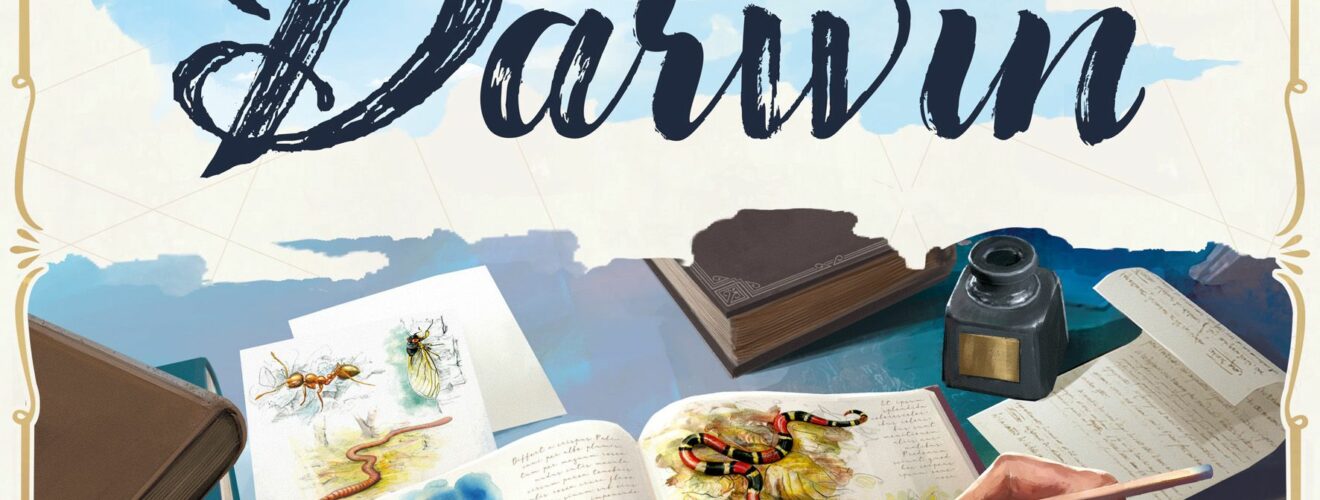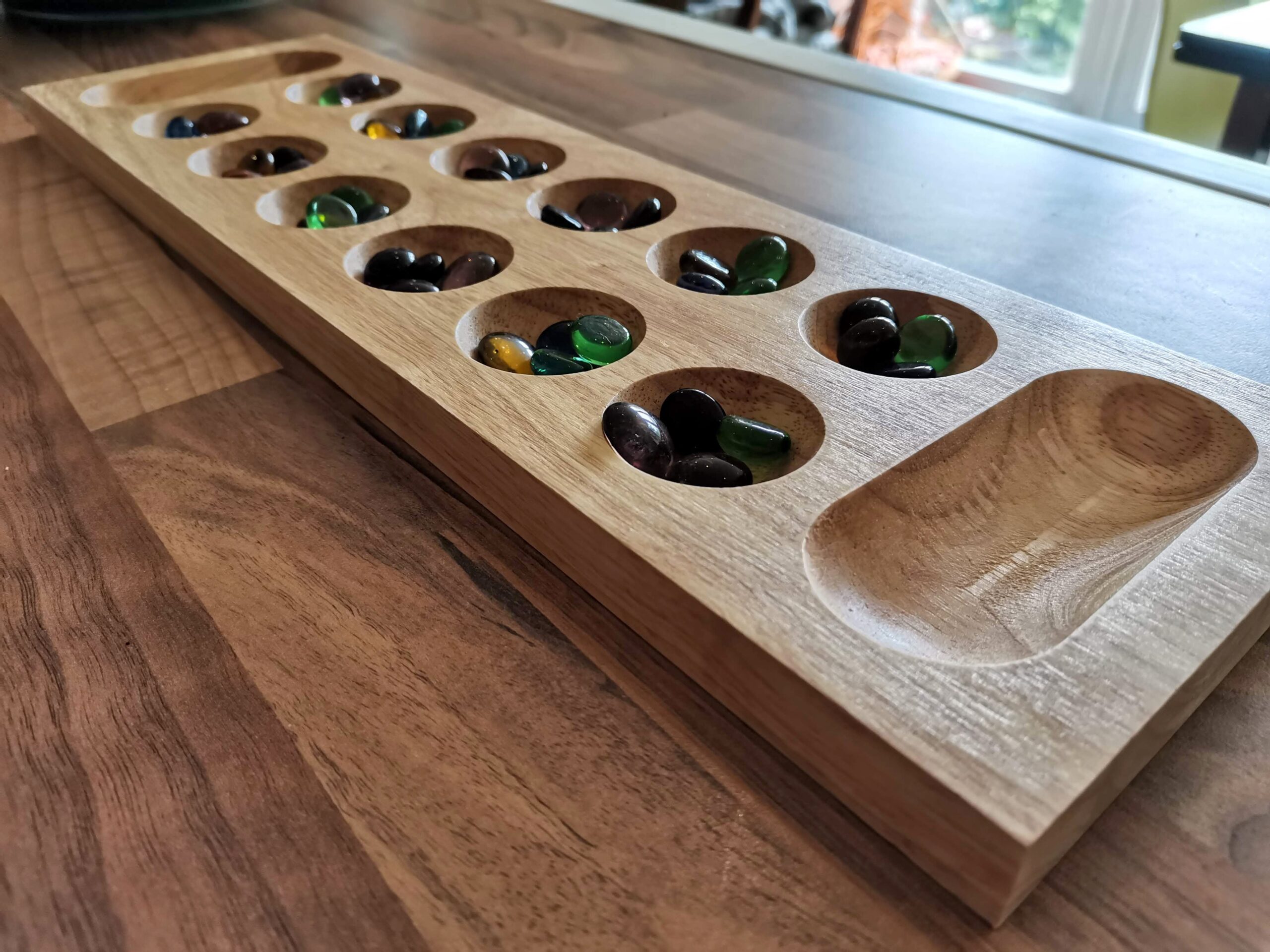In The Footsteps Of Darwin Review

In the Footsteps of Darwin finds itself in the enviable position of being nominated for 2024’s prestigious Spiel des Jahres. It’s a pretty big deal, and if you know anything about previous winners then you know there’s some traits they all tend to share. They’re accessible, they’re medium-weight at their heaviest, and they’re family-friendly. Footsteps shares these traits, and like past winners, it’s really good. Settle in and let me explain why.
No grout required
In the Footsteps of Darwin is a game about collecting tiles from a central board and putting them on your own board, in order to score points. I know, it sounds thrilling. Be still my beating heart. While that might not sound that exciting a premise, the way it’s wrapped up in its theme is great. You see, you’re junior naturalists on board Charles Darwin’s famous Beagle, and you’ve got to help Chuck study animals and write all about them.

The animals on offer are one of four types (mammals, birds, reptiles, invertebrates) and come from one of four parts of the world (The Americas, Africa, Asia, and Oceania). As luck would have it, your player boards have 16 spaces for animal tiles on. One for every type from every place. What were the chances of that? On your turn you claim a tile from the row or column of the 3×3 grid that the little wooden Beagle pawn is next to and put it in its space on your player board. For instance the Moose would go on the purple (America) space with the mammal icon. A place for everything and everything in its place.
You’ll be pleased to know that it’s not just a case of trying to pick up the 16 different tiles to fill your board. This isn’t Patchwork, and there’s some strategy involved. Complete a row or column and you write a publication (i.e. take a little book token worth 5 VPs) about that place or that class of animal. However, you can also collect a tile of a type you’ve already taken, and place the new one on top of the existing one. When you do this you can take an additional theory token, which earns you points at the end of the game if you fulfil the things it wants you to.
Survival of the fittest
What seems like a very by-the-numbers set-collecting game soon peels back its friendly facade to reveal a game with a lot of potential for interaction. There are a load of different theory tokens for end-of-game VPs with lots of different criteria, and lots of them have some crossover. One player might be trying to collect tiles for the bottom-right quadrant of their board, while another is collecting reptiles, and a third wants Oceania tiles. The Saltwater Crocodile on the main board satisfies all of those criteria, meaning all three players might want it, so competition can get pretty spicy.

The only way you can keep players away from tiles is to make sure the Beagle pawn is in a different row and column from the one your precious snap-snap is in. The Beagle moves a number of spaces around the 3×3 grid after you take a tile, and that number is the same as the number of spaces away from the beagle your chosen tile was. Take the one next to you, it’s one space, the middle is two spaces, and the furthest is three. So you can dictate where the next player has to take their tile from by deciding how far the Beagle moves. In the spirit of competition though, there’s some mitigation you can do.
Claiming a tile gets you a bonus at the same time. It might be something to aid end-game scoring, or it might be a guide token. Guide tokens are really cool. You can spend a guide to either move the Beagle one step in either direction or to replace the tiles you’re about to pick from and deal out three new ones in their place.

In the Footsteps of Darwin is a game which will have you cursing your fellow players. You’ll catch yourself muttering “I can’t believe you took my wombat!”, and no one will bat an eyelid. Such an utterance is totally normal. In a game where you only get 12 turns and each turn only takes a few seconds, every wombat matters.
And there’s, like, one wombat.
Final thoughts
In the Footsteps of Darwin surprised me. I was surprised at how fast and light the game is. Seriously, you’ll be finished inside half an hour, and it’s rare for me to play a game that’s so brief which I enjoy so much. And it’s not just me, even my family like it. My wife suggested we play it again straight after her first game, and that’s practically unheard of. It’s light enough that anyone can grasp the rules in a minute or so, but still fun enough to try to maximise your scoring when you know what you’re doing. For a game this quick, there’s a surprising amount of strategy mixed in, and I like it a lot.

I was also surprised at how thematic they’ve managed to make such a fun little game. Study all the species in an area of the world, or study lots of the same kind of animal from all around the world and you get to write a book. Makes sense, right? If you research an animal type in a part of the world that you’ve already researched, you develop a greater understanding of its potential evolution and get to take a new theory. Again, it makes sense. When you tie it all together with the appendix book that talks about Darwin’s voyages and describes in his words the animals he encountered, it’s a really neatly presented package.
I think the only way In the Footsteps of Darwin could disappoint you is if you go into the game expecting something that it’s not. It’s not heavy. It doesn’t take long. It doesn’t have tons of pieces. In other words, it’s not Darwin’s Journey, another excellent, but much heavier game based on the same theme. You set it up in a matter of minutes, play a game, and have it all back in the box 30 minutes later, and you have a blast while you play it. What’s not to love?
At the time of writing (June 2024) I’ve no idea what will win the SdJ, but it wouldn’t surprise me in the least if this game does. If it does, it deserves to. It’s a cracking little game which blew my expectations out of the water.
Review copy kindly provided by Hachette Boardgames UK. Thoughts and opinions are my own.

In The Footsteps Of Darwin (2023)
Design: Grégory Grard, Matthieu Verdier
Publisher: Sorry We Are French
Art: Maud Briand, David Sitbon
Players: 2-5
Playing time: 20-30 mins














Thank you so much Adam, what a lovely read – so nice to see the whole family enjoying it too. Fingers crossed for the SdJ now…
Yeah, it’s been a real hit 🙂